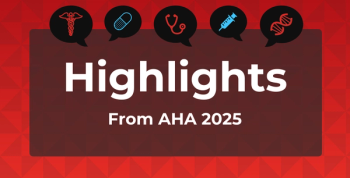
The Optimal Duration of EAT for Patients With Febrile Neutropenia and Hematological Malignancies
For high-risk patients with hematological malignancies and febrile neutropenia, empirical antimicrobial therapy can be discontinued after 72 hours of apryexia and clinical recovery regardless of their neutrophil count, according to a study in The Lancet Hematology. The traditional approach of continuing the initial regimen of EAT in neutropenic patients with unexplained fever until neutrophil recovery could result in unnecessarily prolonged EAT.
In high-risk patients with hematological malignancies and febrile neutropenia, empirical antimicrobial therapy (EAT) can be discontinued after 72 hours of apryexia and clinical recovery regardless of their neutrophil count, according to a new study in
"Understanding the optimal duration of EAT for patients with hematological malignancies and febrile neutropenia of unknown origin is still a challenge," wrote the authors of the study. The traditional approach is to continue the initial regimen of EAT in neutropenic patients with unexplained fever until neutrophil recovery. However, according to the authors, this could result in unnecessarily prolonged EAT in routine clinical practice in patients with hematological malignancies who have continued post-chemotherapy neutropenia.
“The available scientific evidence supporting the alternative approach of stopping antimicrobial therapy before neutrophil recovery in afebrile adult patients with negative cultures is scarce,” wrote the authors.
Authors of the study conducted an open-label, randomized, controlled phase 4 clinical trial in 6 academic hospitals in Spain from April 10, 2012 to May 31, 2016. The study included 157 adults with hematological malignancies or hematopoietic stem-cell transplant recipients that had high-risk febrile neutropenia from an unknown origin.
Participants were separated into 2 groups: the experimental group received EAT until 72 hours or more of apyrexia plus resolution of all symptoms and signs of infection, and normal vital signs; the control group received EAT until they had a neutrophil count of 0.5x109 cells per liter.
The participants received a complete physical examination, assessment of severity signs and source, biochemistry and hematology samples, 2 sets of blood cultures, and additional samples from the infected sites as clinically indicated.
Results showed that the mean number of EAT-free days was significantly higher among the experimental group (16.1; SD 6.3) than in the control group (13.6; 7.2), with an absolute difference of -2.4 (95% CI -4.6 to -0.3; p=0.026). Of the 636 adverse events reported (341 in the experimental group versus 295 in the control group), most (323 in the experimental group versus 257 in the control group) were considered mild or moderate.
The most common adverse events that occurred in the experimental versus the control group were mucositis (36% versus 25%), diarrhea (29% versus 30%), and nausea and vomiting (26% versus 28%). Fifty-six severe adverse events were reported: 18 in the experimental group and 38 in the control group.
The study findings suggest that for patients with hematological malignancies and high-risk febrile neutropenia without microbiological documentation, withdrawal of EAT in afebrile and stable patients with recovery is better than the traditional recommendation of waiting until neutrophil recovery.
“Discontinuation of EAT in persistently neutropenic patients remains an issue of debate,” concluded the authors. “Our study provides evidence on the optimal duration of EAT in patients with hematological malignancies and supports the ECIL­4 recommendation stating that EAT can be discontinued in hemodynamically stable patients after apyrexia, irrespective of their neutrophil count.”
Newsletter
Stay ahead of policy, cost, and value—subscribe to AJMC for expert insights at the intersection of clinical care and health economics.









































